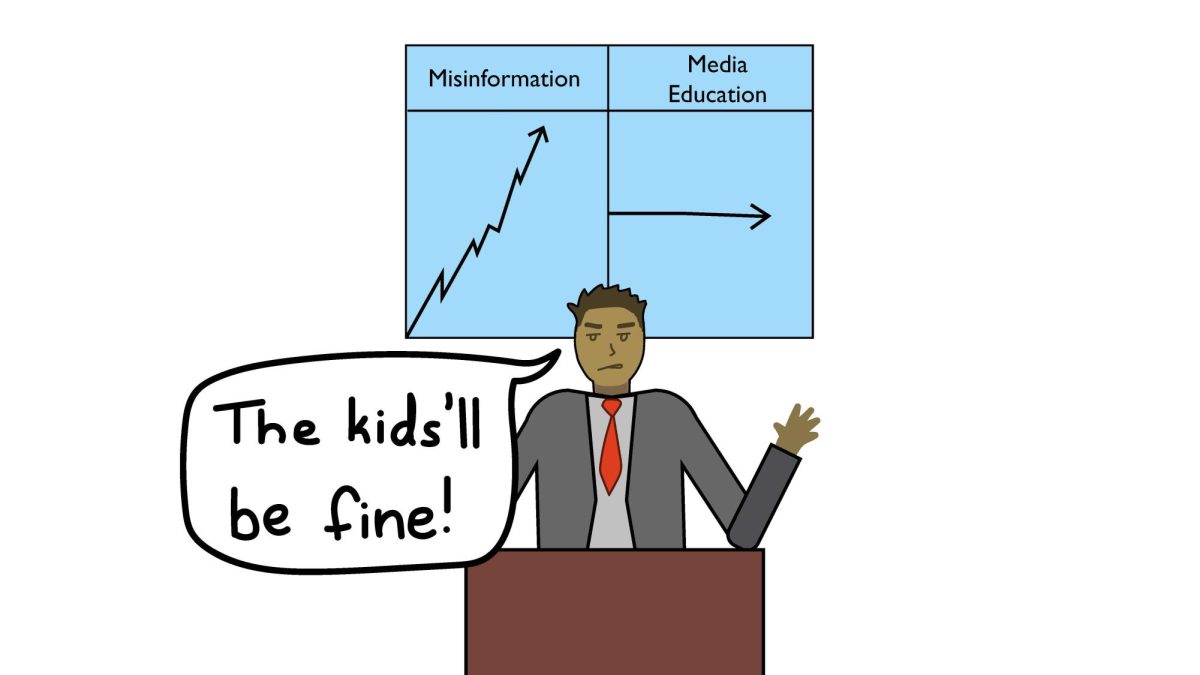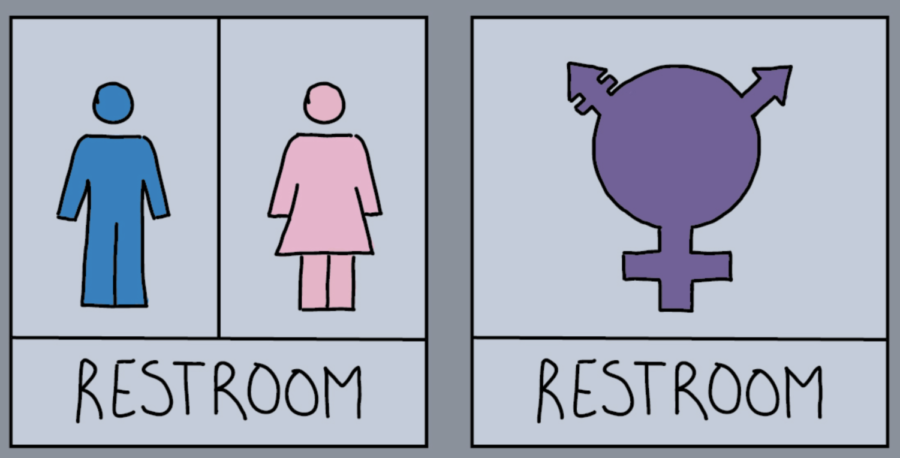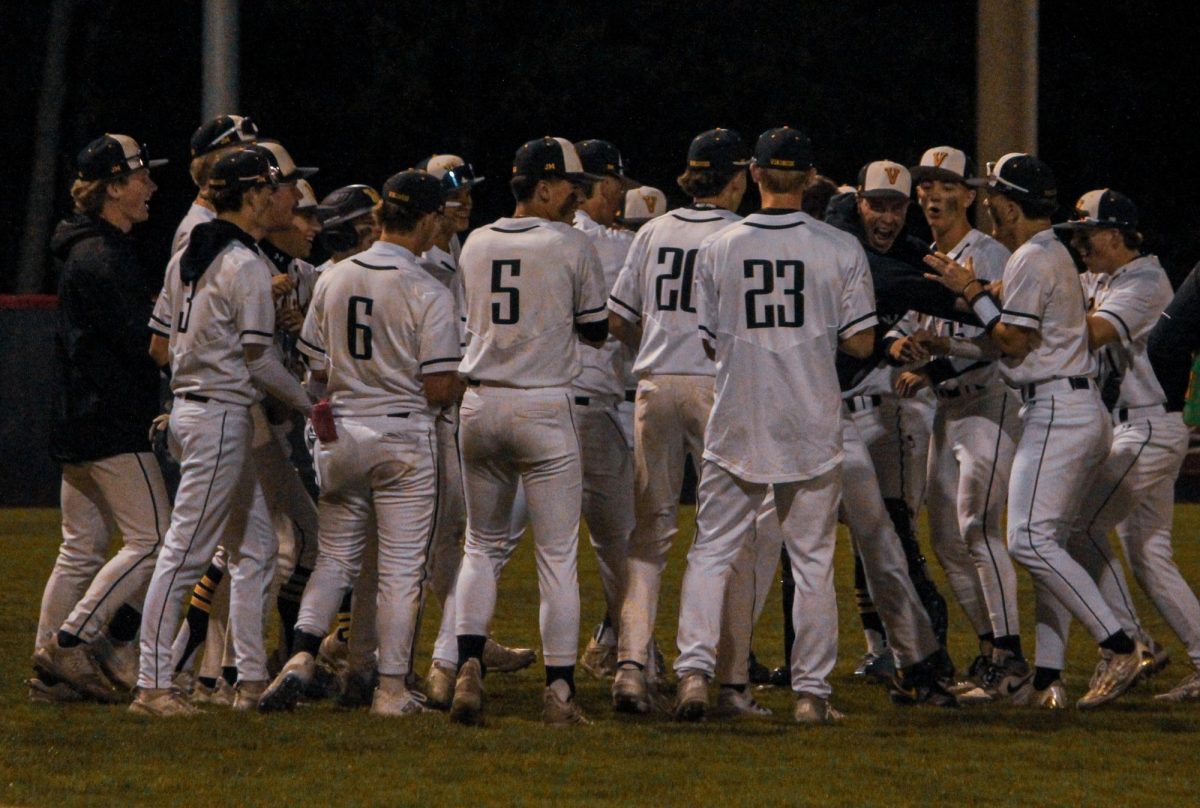Point: Stand up
When the Pledge of Allegiance is recited during morning announcements, the voice from the speaker is largely ignored. In many classrooms around the school, students remain seated while teachers mill about the classroom, giving no indication that they heard the pledge. Standing for the pledge is a sign of respect and appreciation towards the country; students need to stand and recognize this.
As Americans, it’s necessary to acknowledge America’s relative prosperity and safety. Millions of citizens, many of whom are relatives of the school’s community, serve or have served in the military, often at the expense of time with loved ones, long-term relationships and even their lives. Taking less than a minute to recognize their sacrifices won’t hurt anyone.
According to the Center for Immigration Studies, there were 47 million foreign-born residents as of April 2022 in the U.S.. In such a diverse country, a sense of unity is critical for building community. Standing for the pledge is an affirmation that everyone is welcome in America and creates a sense of patriotism. Patriotism prompts people to care about the country and creates a sense of belonging that can be extremely powerful for kids who are far away from their original cultures. However, without any students participating, the pledge is reduced to background noise.
As a result of the Supreme Court case West Virginia Board of Education v. Barnette, students cannot be compelled to say the pledge, nor should they be. Thus, those who choose to abstain from the pledge may argue that they’re simply exercising their freedom of speech. However, in order for America to continue to enjoy such freedoms, Americans must recognize them and be grateful for them. Saying the pledge is an easy and powerful way for students to do this.
Along with their privileges, Americans have a responsibility to protect their country’s values of free speech and democracy. Millions of people are proud to call themselves American, despite the country’s flaws, because they feel lucky to have access to its resources. But when America needs to defend its values, it’s up to the people to do so. Saying the pledge is an acceptance of the rights that come with being American and the duty of defending them.
In essence, the Pledge of Allegiance embodies American values at the most fundamental level. Standing for it recognizes the privileges it provides and the people who defend them. It’s crucial for students to keep this in mind when the pledge comes on over the speakers and take the minimal effort of standing up.
Counterpoint: Sit down
The Pledge of Allegiance is not worth standing for and is becoming obsolete. Only a handful of students out of dozens stand for it. This isn’t just the case at Inglemoor; students across the nation are choosing to stay seated during the outdated pledge, and it’s their right to do so.
Students should not feel obligated to stand for the Pledge of Allegiance. The First Amendment guarantees the right to free speech, which means students can’t be forced to stand if they don’t want to. They should choose to be in control of their patriotism, instead of standing for something they don’t know if they even believe in.
The Pledge of Allegiance is simply outdated, particularly with its mention of God. The United States is a mix of different cultures and religions, and the pledge isn’t inclusive. It was created in 1892 by Francis Bellamy to celebrate Columbus and Americanize schoolchildren who were immigrants, separating them from their culture. Many students who sit choose to do so because they don’t worship a single God, or perhaps the Christian God that the pledge alludes to. “Under God” was added to the pledge by former President Eisenhower during the Red Scare, a time when capitalist America looked down upon “godless” communism. Showing respect for one’s nation should not require students to stand for a pledge with such a painful history.
Despite the pledge recitation being a custom for so long, students across the country have stopped standing for the pledge in recent years. Many students have not stood since middle school or even elementary school. According to a Nordic News survey, only 17.2% of 157 students surveyed stand for the pledge, and 52% of 123 students who stay seated say they do so because they believe the pledge is problematic.
The United States is currently in an era of social turmoil where many social issues such as racial injustice are being brought to light, and the pledge’s problematic history proves it should be phased out like these other issues. The pledge promises “liberty and justice for all,” but that’s not reflected in the United States, both now and when the pledge was written. The pledge boasts achievements of unity and indivisibility that the US hasn’t accomplished.
The Pledge of Allegiance never was a sign of patriotism and unity for students. It has been reduced to a meaningless routine that most brush off and has proved to be more harmful than beneficial. Many issues within the United States are systemic, and solidarity is achieved through shared struggles, not by standing for a pledge that the nation fails to reflect the success it sings about. Change happens through resistance and unity, and the pledge isn’t a beacon of unity.
Students should stay seated for the Pledge of Allegiance because it lacks inclusivity and holds a grim place in history. By sitting for the pledge, students are acknowledging the systemic shortcomings of the United States that the pledge fails to recognize.

























A. Patriot • Sep 17, 2024 at 1:34 AM
You’re evil. The long march through the institutions must be reversed. Your article shows how pervasive leftist ideology has become.
Cordner • Apr 8, 2024 at 12:46 PM
Is it really so bad that you need to put your pronouns like what the flip
Ben • Nov 3, 2023 at 5:14 AM
Hi!
I really like this essay. However, I’m curious about the stance the author takes on this essay. I see great points for both but am searching for the thesis. Is there one?
Best regards, Ben.